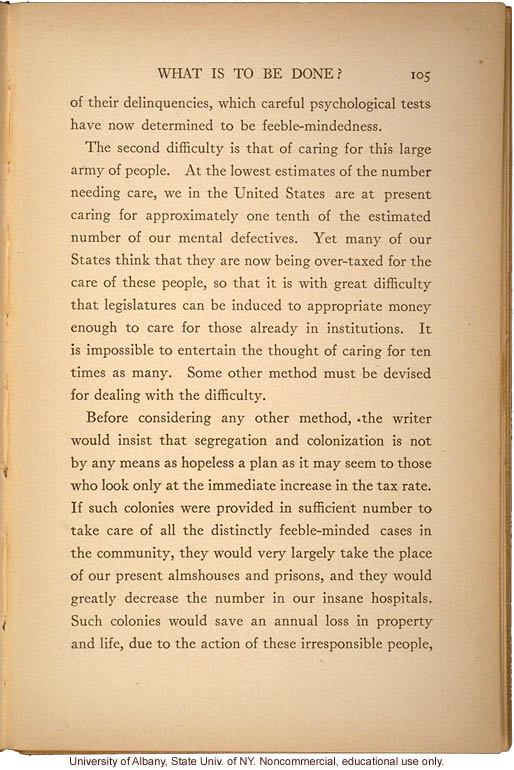What is to be Done? 105
of their delinquencies, which careful psychological tests have now determined to be feeble-mindedness.
The second difficulty is that of caring for this large army of people. At the lowest estimates of the number needing care, we in the United States are at present caring for approximately one tenth of the estimated number of our mental defectives. Yet many of our States think that they are now being over-taxed for the care of these people, so that it is with great difficulty that legislatures can be induced to appropriate money enough to care for those already in institutions. It is impossible to entertain the thought of caring for ten times as many. Some other method must be devised for dealing with the difficulty.
Before considering any other method, the writer would insist that segregation and colonization is not by any means as hopeless a plan as it may seem to those who would look only at the immediate increase in the tax rate. If such colonies were provided in sufficient number to take care of all the distinctly feeble-minded cases in the community, they would very largely take the place of our present almshouses and prisons, and they would greatly decrease the number in our insane hospitals. Such colonies would save an annual loss in property and life, due to the action of these irresponsible people,
[end]


